Bolt Action – Korea
For the first time ever, Bolt Action steps outside of World War 2. We had a brief "what-if" scenario with Operation Sea Lion and Campaign Gigant, but that was as far as we went from the '33 to '45 conflict. But that was changed in the second half of 2019 with the release of the supplement Bolt Action: Korea.
This is not the first plan for a Bolt Action setting outside of the second world war, there were plans to extend the range support by a book for world war one, but that got dropped in pre-production stage. As much of the gear that was developed in world war 2 was still put to use beyond the end of war in cold war conflicts - on both sides - this seems like an interesting field for a wargaming company to dive into. Especially if you have such an extended range, as Warlord carries. The Korean War was one of the first major conflicts of the cold war era and was fought between 1950 and 1953. The North Korean regime, backed by the Soviet Union and Communist China (was winner of an earlier post-ww2 conflict, the chinese civil war), fought against the South Korean government and a UN task force for the control of the Korean peninsula.
Operation Overlord was the largest supplement so far, but as this has to set up an entire new conflict it sets a new record for Bolt Action at 240 pages. Still at the regular price tag of 19.99 GBP. And as always, a special miniature for direct customers. A "Frozen Chosin", from the Battle of the Chosin Reservoir.
This book is a joint work of Jon Russell and Steven Urquart Smith, their first work for the Bolt Action series. It is important to point out, that this is a self-contained supplement to cover the campaign of the Korean War, but you still will need the second edition Bolt Action rule book to play.
What is it about?
The Korean War is rather unique. The battles were fought between June 25th 1950 to July 27th 1953 and ended with a military stalemate, as both sides never managed to get the upper hand. And as no peace treaty was ever signed, both sides of Korea are technically still at war, engaged in a frozen conflict. But what raises this conflict beyond the level of a civil war?
The (northern) Korean regime was supported by the Chinese and Soviet Union, delivering them with equipment that mostly already was in service during world war 2. On the other side the South Koreans were backed by the UN, most dominantly by the United States, to prevent Korea from falling into the hands of the communists and putting a chain reaction into action - the domino theory. The americans weren't the only western allied forces in Korea, but Great Britain incl. Commonwealth forces like Canada and Australia as well. This brought more modern equipment in service.
Knowledge Hub and Simply History both prepared pretty good videos on the conflict and I can only highly recommend watching these, as they give a brief and good insight in the situation. Better than I could provide in just this paragraph.
Inside the book, you'll find a comprehensive history of the conflict with details of every major battle fought between the two sides. It also includes details of the various forces and their organisation, commanders, and equipment. Scenarios are provided for many of the battles, along with comprehensive force selectors to help you assemble your force.
First Impression
You've read my enthusiasm on Operation Overlord, how they went for 216 pages and a lot of info on the conflict. Well, Korea raises the bar again. And I think it is great, that Warlord and Osprey support that growth in the way they do. For me the first few pages, incl. the map, was more important in this book than in others, as Korea for an European is far away and the conflict is not that present, especially if you're not anglo-american.
I don't think that I need to point out the quality of the layout, as this is on the same high level as we're used to from the other Bolt Action supplements. It is interesting to see the artwork supplied by Osprey, as to repeat myself from above, this is not a conflict that many people were in touch with before. The dioramas and fight scenes, are new as well. Warlord Games used for some of these, among others a few of the pacific terrain pieces by Sarissa. Lots of rural battle scenes.
The Korean war is part of the transition from (post) World War 2 into the Cold War conflict. So you'll find a lot of familiar equipment, weaponry and tanks, but a few newer items, that weren't ready to be put into service yet. So the Korean war was fought with ZiS-anti tank guns and SU's on the one side, and Pershing, Pattons and Centurions on the other.
There are five army lists in this book, the North Korean People's Army (KPA), Republic of Korea (RoK), United States & United Nations, British Commonwealth and Chinese People Volunteer's Army (PVA). Each of course have their own period selectors for the different parts of the conflict, they were involved in. The Legends of Bolt Action are called notable combatants in this conflict, and cover the communist, Company Commander Zhao Cheng, Commander Chu Pak (a fictional hero commanding the renown tank 215), Sgt. Taek Kim, and UN, Cpt. Lewis Millet, Sgt. Reckless (a horse, that transported ammunition) and Private William Speakman. As with the latest Bolt Action books, these characters are bundled in a single chapter instead of spread across allover the book.
Special rules for the Korean war cover (optional) multinational forces, aircrafts (yet, you could for example have some Blood Red Skies battles, using MiG alley, bound in), weather hazards, night fighting, digging in, amphibious assaults, buildings and airborne assaults. A couple of these were already covered in other supplements, some were modified to fit the Korean battle fields. All in all, it is quite a chapter on special rules. Remember these are optional and can be applied to even out the situation in some scenarios.
The 17 scenarios are listed in chronological order, divided into 5 chapters. These cover the to and from of the conflict, beginning with the North Korean invasion, Inchon and the Drive to the Yalu River, the Chinese intervention, UN counter-attacks and Chinese offensive, as well as the final stalemate from July 1951 to July 1953.
- Scenario 1: Battle for Osan
- Scenario 2: Comrade Ivan needs your help!
- Scenario 3: Battle of the Big Cities
- Scenario 4: Battle of Inchon
- Scenario 5: Battle for Hill 282
- Scenario 6: Battle of Pakchon 1950
- Scenario 7: Nuke 'em till they glow!
- Scenario 8: Actions at Takchon and Kunu-Ri
- Scenario 9: Hold back the night
- Scenario 10: Chipyong-Ni February 1951
- Scenario 11: Task Force Crombez
- Scenario 12: Battle of the little village
- Scenario 13: Valkyrie
- Scenario 14: Fog and friction
- Scenario 15: Bug out!
- Scenario 16: Prisoner hunt!
- Scenario 17: Battle for Outpost Haros
How does Bolt Action Korea play?
As this is a proto-war, both korean forces are more of an infantry army, with other equipment "donated" by their supporters. As such you'll have a certain lack of veterans and heavier/newer equipment on both sides, at least until the late war period. The UN/US/UK, has access to a lot of newer equipment and more veterans, from World War 2 and the already running development, providing vehicles like the Patton or Centurion. The Chinese, as they were heavily involved in World War 2 as well, has access to heavier soviet equipment (like an IS-2) compared to the KPA and more veterans.
By that, compared to "regular" Bolt Action, fighting the civil war feels like early war lists and you'll have to add the big brothers to upscale that. Yet, all in all, it feels a bit asymmetric, as the western nations replace their disadvantage in numbers with more modern equipment.
The fights themselfs are very changeful, as you have skirmishes in rural areas, stalingrad-esque city fights, amphibious landings as you know from the Pacific, a downed aircraft rescue mission, just to list a few of the ideas and scenarios you can fight.
What's next?
While I'm writing this review, Campaign Stalingrad is already live for pre-order. Stalingrad was the turning point of the fate of war on the Eastern Front, and made it later possible for the USSR to mobilize for Operation Bagration, covered in Road to Berlin for Bolt Action. In the first edition of Bolt Action Warlord Games covered all the battles in one supplement, Ostfront.
The two other supplements that are already known to be released in 2020 will be Campaign Mariana & Palau Islands (or Operation Forager), covering the US forces fighting against the Imperial Japanese in the Pacific theatre during late 1944. A topic that was only briefly covered with Empire in Flames in the first edition. And with D-Day: Anglo-Canadian Sector the in Operation Overlord promised expansion on the landing in the Normandy (at the beaches Sword, Juno and Gold) by Commonwealth forces will be covered in more detail.
Conclusion
This book is really well made. This comes to me both as a suprise and not, as the supplements increased in quality, yet this is a niche spin-off, so there was always the chance that it might not work out in the same way, as the well-known World War 2. I am quite happy, that they kept the price point at 20 quid, as you get a lot of material for that price.
As mentioned above, this supplement will most-likely speak more to the anglo-american crowd. Or at least players, as you have a proper excuse to add some what-if or very late war gear to your projects. Technically, as a player of British or American armies, you could do some low-level Konflikt 47 with this. For the other armies, it is a similar situation as you have with regular Bolt Action outside of the big four, you really have to be dedicated. Warlord Games covers miniatures for the forces of the KPA, PVA and RoK, but you have a lot of metal miniatures and resin kits, a very low amount of plastic kits, and as this is niche, not a broad range of choice, if you don't like the miniatures, as there are only very few options for that conflict. That said, it will be much easier for British or American armies to try this out, as you could do so with almost any later war army you already have. The others will have to be build from the ground up, as far as you don't have access to any remains of russian vehicles, and you're missing the infantry.
Other than that, it is very good to see, that Bolt Action grows beyond the timeline of 33 to 45, and it has the potential to be developed further, to cover more conflicts of the 50's and 60's. Most of them will have similar limits as mentioned above, as long as you don't for go for a broader Cold war gone hot setting, like Flames of War tried/did.
If you're looking forward to go all in, do so, as you won't regret it. The book is well made, it is an interesting conflict with a lot of scenario options. At the value it delivers, I can even recommend it to collectors. By that, only if you're a casual gamer and have trouble to find opponents for that conflict, you might want to skip this release. To everyone - enjoy.
Bolt Action is a brand of Warlord Games.
The reviewed product item was provided by the manufacturer.
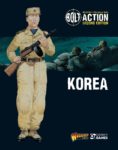
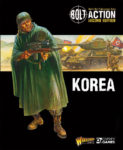
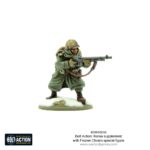
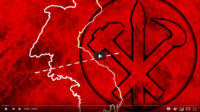
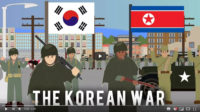
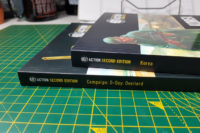
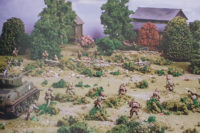

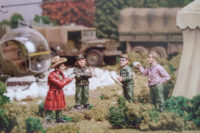
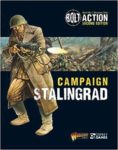
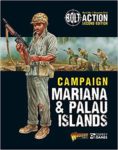













Leave a Reply